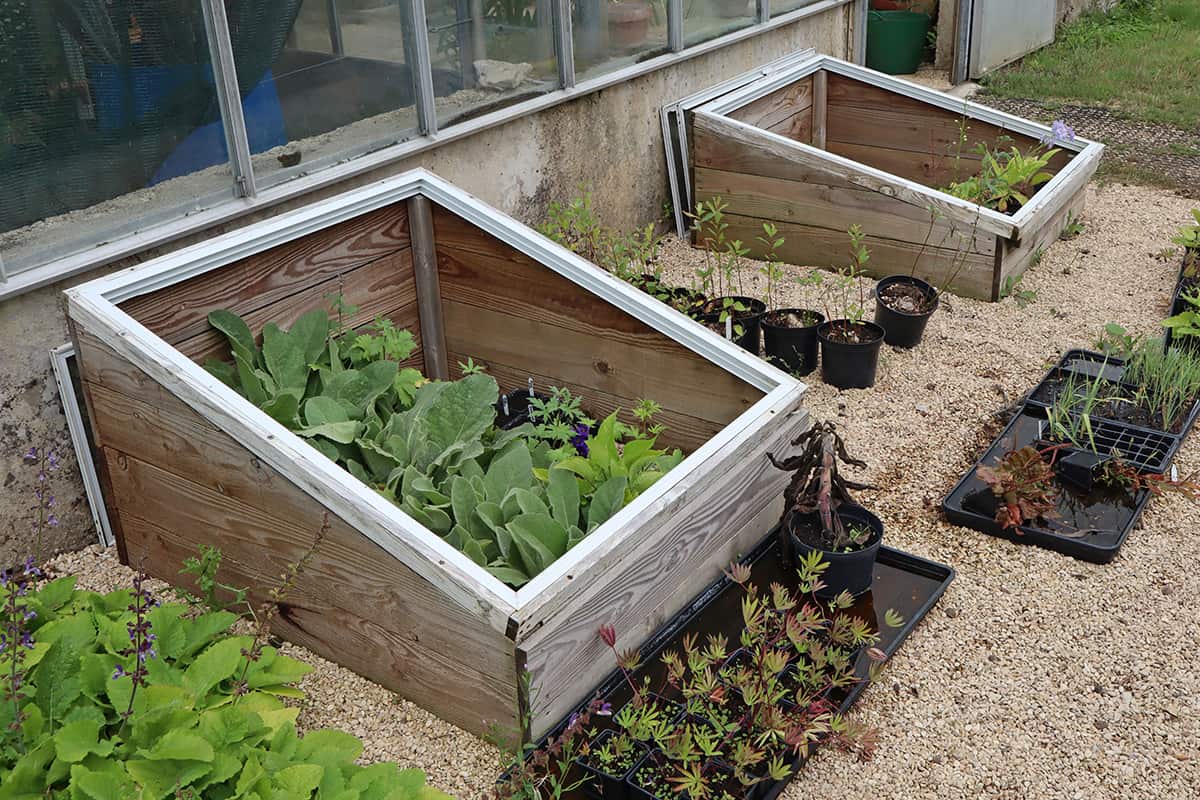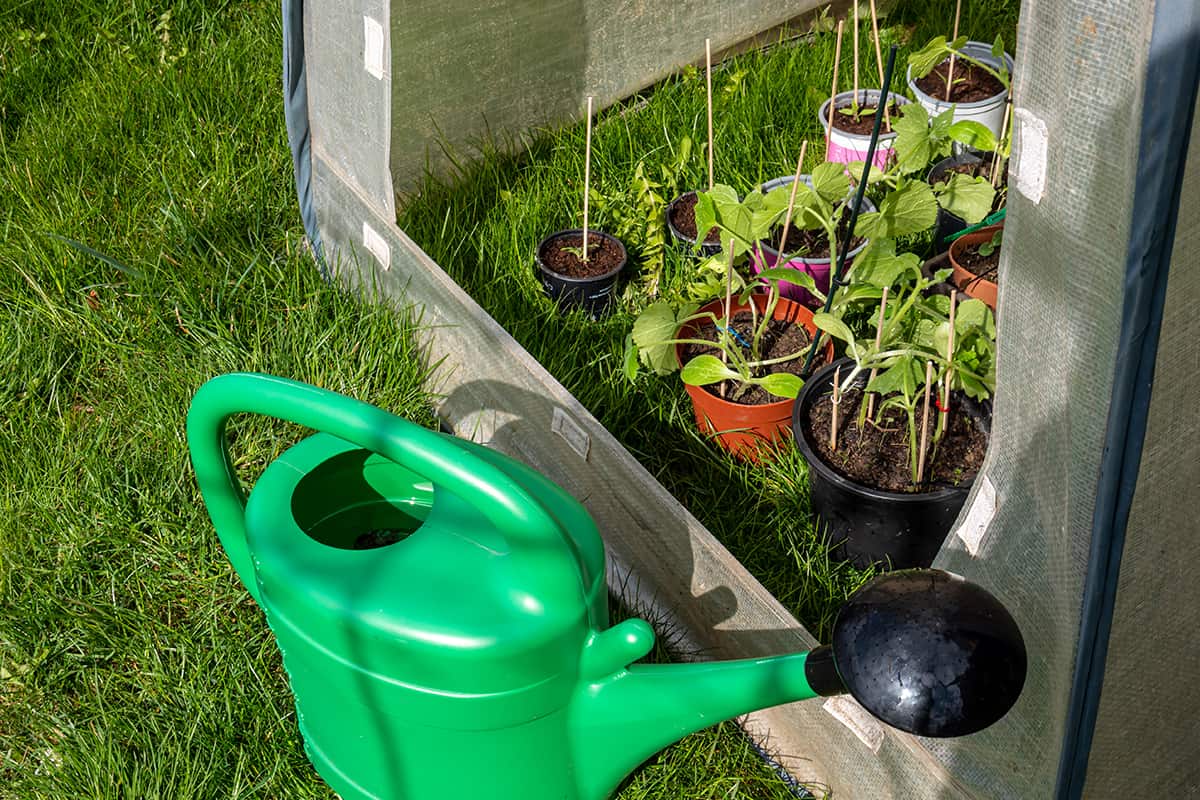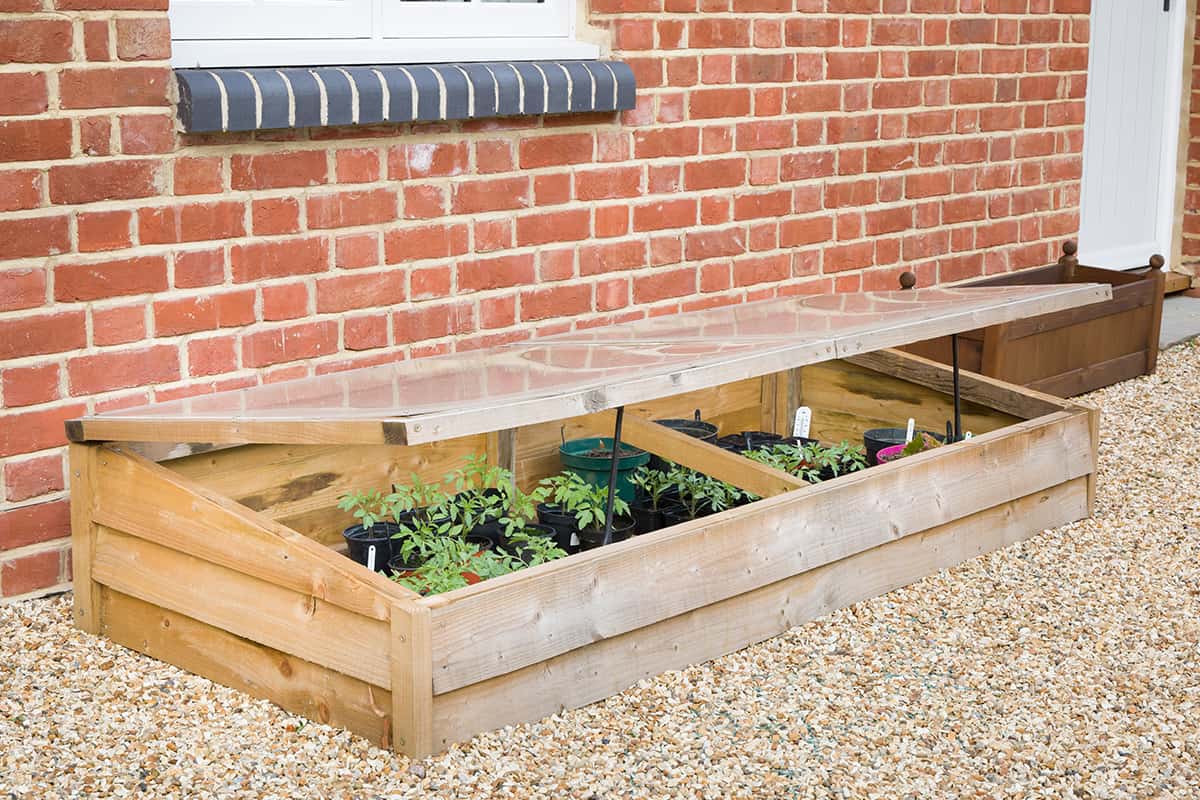Perhaps you are planning to grow or transfer your plants in a cold frame. Either way, proper care is necessary to help them grow and thrive. How will you provide them with their basic needs such as light and water? We have researched the question and here is what we’ve found.
Plants stored in a cold frame need to be watered; the amount and frequency depend on the planter's purpose, the general climate, and the plant types housed in the structure. Watering requirements vary for overwintering, acclimating seedlings, or extending the growing season.
Read on and find out the ways you can properly hydrate your plants while inside a cold frame as well as the aspects you need to monitor to ensure healthy growth.
Cold Frame Planting: The 'Poor Man's Greenhouse'
Cold frames are simple, portable structures usually made of wood and plastic designed to provide insulation and controlled conditions to protect plants from environmental elements.

Dubbed as the "poor man's greenhouse," cold frames come in different sizes, designs, and materials. All structures have a door-like feature or sash at the top, which can be closed, opened, or left ajar to regulate temperature.
It is relatively easy to construct a cold frame and you might already have enough material around your home to salvage one. If you have existing containerized raised beds in your garden, adding a transparent lid automatically converts it into a cold frame.
You can use old crates, bins, and almost any material, just take off the bottom and affix an old window or framed glass to act as cover.
Check out Exaco BioStar Premium Cold Frame on Amazon.
What Are Cold Frames Used For?
Cold frames function to overwinter plants, start off and acclimate seedlings, or extend the growing season.
How Do You Overwinter Plants In A Cold Frame?
In the absence of a greenhouse, most gardeners need to keep tender plants indoors during winter. But certain problems and limitations can arise. What if there isn't enough room? What about the soil-bound plants in the garden?
A cold frame will offer protection by providing conditions favorable to your plants during the winter months. Position your potted plants close together within the structure and fill the gaps with insulating material.
Dried leaves, shredded newspapers, cartons, or compost mixed with farmyard manure will help keep the environment warm.
You can customize cold frames to accommodate vegetables and herbs in elevated beds, flower boxes, and even small fruit trees to prevent frost damage. Add a layer of mulch to help retain moisture and regulate temperature before placing the cold frame over the plants.
Do You Need To Water Overwintered Plants In Cold Frame?
Water the potted plants moderately before storing them in the cold frame and monitor the moisture levels throughout the period. Make sure the soil does not dry out but avoid overwatering since plants do not need much hydration during the cold months.
When Do You Open Or Close The Lid Of A Cold Frame?
The lid or sash should be closed during the night especially in midwinter when the temperature is at its lowest. You can add an extra layer of protection like a heavy blanket or thick canvas when a hard freeze or snow is expected.
The lid can be partly opened during the day when the sun is out to allow air to circulate freely within the cold frame. As spring approaches, you can increase the ventilation and acclimate the plants by opening the lid completely for several hours.
How Do You Use A Cold Frame For Seedlings?
The main advantage of starting off seedlings in a cold frame is that the plants are directly introduced into the soil right away. It eliminates the stress of transplanting and the young buds gradually become acclimated.

Have the cold frame in place for at least 10 days before sowing under the structure. Keep the lid closed during this period to keep the interior heated enough to warm the soil.
Spread your potting mix evenly about 2 to 3 inches high and space the seeds adequately, allowing enough room for plants to develop. They will mature on the medium and it is best to anticipate their growth rate and consequent requirements.
Opening the cold frame a few hours during daytime over a week's period will help the sprouts to adapt to changes in sunlight, temperature, moisture, and wind exposure.
How Often Do You Need To Water Sprouts In Cold Frames?
Keep the soil moderately moist but not wet or soggy. Developing roots are sensitive to rot so allow the growing medium to dry out between hydration. Monitor the moisture levels closely and ventilate the interior of your cold frame to maintain optimal conditions.
How Do You Extend The Growing Season Using Cold Frames?
Season extension refers to the practice of allowing plants to be grown and cultivated beyond their normal growing period.
Cold frames provide the same benefits as a greenhouse only on a smaller and more affordable scale. Basically, they provide optimal conditions in terms of temperature, sunlight, moisture, ventilation, and exposure.
To illustrate, planting warm-season crops late in the fall has a better chance of growing and thriving during the summer months as long as they are grown inside a cold frame. It regulates and replicates the climate in which the vegetation is accustomed to.
How Often Do You Need To Water Plants To Extend The Growing Season?
Since a cold frame regulates indoor temperatures, hydrating the plants only when the soil is dry is necessary. The growing medium should be kept moist but never waterlogged to prevent the spread of plant diseases.
For directly-sown vegetation, regular hydration is not needed because the cold frame keeps humidity at the desired level, making the soil moist.
However, you should constantly check the temperature because it may fluctuate. Too much indoor moisture can damage the plants.
What Can I Grow In My Cold Frame?
Crops, herbs, and tender perennials are actually advised to be grown inside a cold frame, especially if you intend to plant them beyond their recommended growing periods. This way, the plants won’t need to adapt to the condition and be exposed to temperature fluctuations.
Vegetables
- Lettuce
- Radish
- Carrot
- Spinach
- Parsley
- Arugula
- Eggplant
- Tomato
- Watermelon
- Cucumber
- Pumpkin
Herbs
![HERBS THAT CAN GROW IN A COLD FRAME, Do You Water Plants In A Cold Frame? [Yes! Here's What You Need To Know!]](https://gardentabs.com/wp-content/uploads/2022/12/HERBS-THAT-CAN-GROW-IN-A-COLD-FRAME.png)
- Chives
- Oregano
- Parsley
- Marjoram
- Cilantro
Tender Perennials
- Pelargoniums
- Fuchsias
- Ferns
- Begonias
Do Cold Frames Increase Yield?
Most crops and herbs are sensitive to temperature fluctuations. Taste and appearance are affected even with only the slightest change in humidity.
Since cold frames prolong the growing period, the annual yield is increased. Not only will it contribute to production, but the vegetation will produce quality yield.
Monitoring Cold Frame Conditions
In order for plants to grow and thrive in a cold frame, you will need to constantly monitor the temperature, moisture, ventilation, sunlight, and wind exposure.
How Do You Control Temperature In A Cold Frame?
You should regularly monitor the soil and air temperature as well as any changes in the weather. This way, you will know how to respond to the current situation.
To illustrate, if temperatures rise above 70 degrees Fahrenheit during the day, you may need to open the covering so that the heat will escape. You can place a thermometer inside the box to keep you informed.
How Do You Reduce Moisture In A Cold Frame?
You might have to ventilate the area to reduce moisture and maintain the optimal humidity level. Opening the lid will not only regulate temperature, but it will also make the air less humid because water vapor can escape and evaporate.
Do not overwater your plants as it promotes dampness. Stick to the plants’ individual hydration requirements and focus on proper ventilation practice.
Should A Cold Frame Be In Full Sun?

Cold frames should be placed in a sunny yet sheltered location so that the plants will still receive adequate light as well as sufficient protection against intense heat.
If you are growing warm-season crops during the colder months, you may want to partially cover the frame with a fabric to limit light exposure that encourages active growth.
Should The Plants Be Exposed To Wind?

Seedlings, young growths, and established plants should not be exposed to harsh wind to prevent them from being damaged. If, however, you may need to remove the lid, you should leave the cover opposite the direction of the wind partially opened, this way proper ventilation, as well as protection, are achieved.
In Closing
A cold frame helps create the ideal growing environment for crops, herbs, and other tender plants. It is important to provide them with proper hydration, the right temperature, and ventilation to help them thrive and develop. We hope the article has guided you with the ways you can properly care for plants inside a cold frame.
You might also find these topics helpful:

